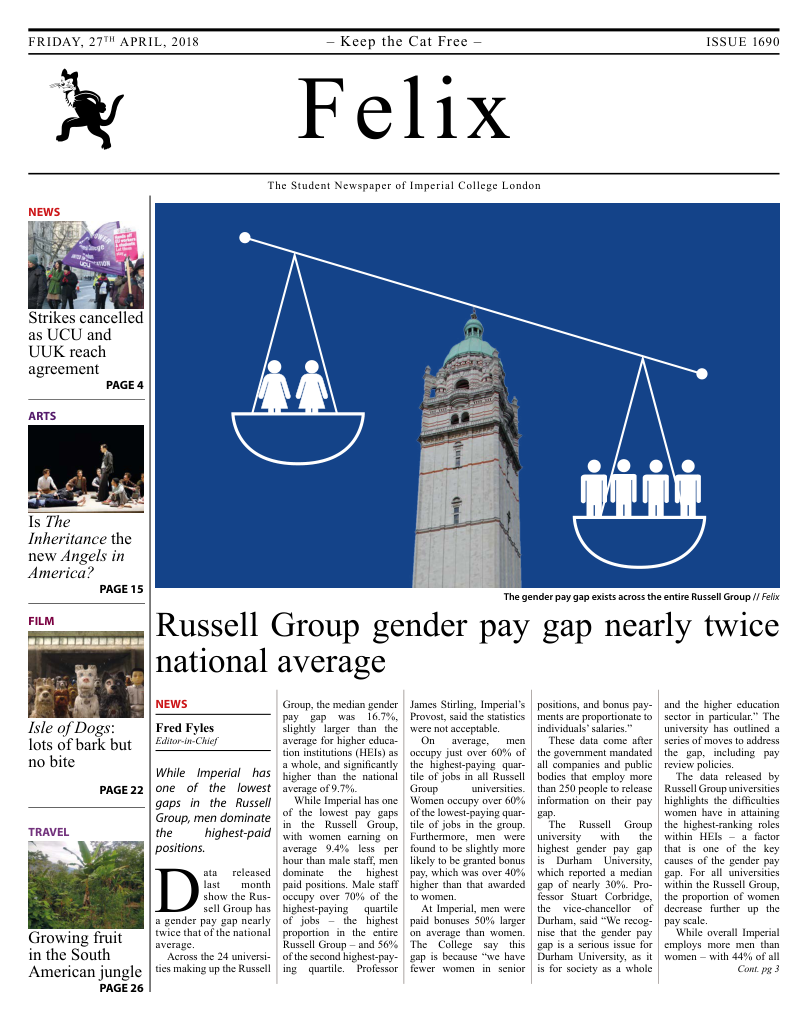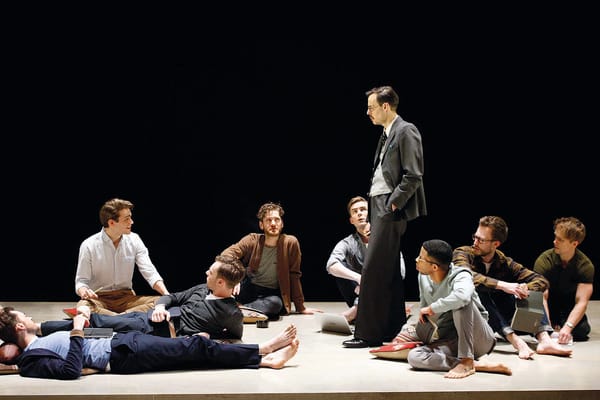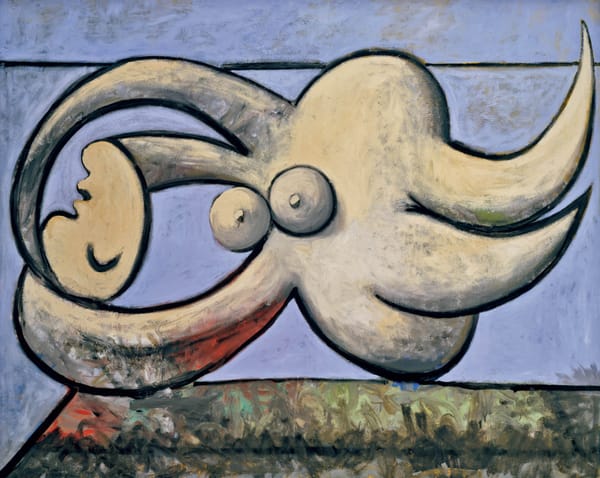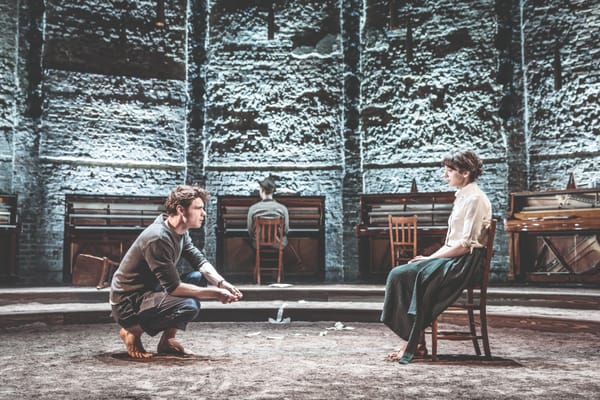Vivaldi’s The Four Seasons: a reimagining at the Sam Wanamaker Playhouse
Gyre & Gimble effortlessly fuse cutting-edge puppetry with Max Richter’s beautifully recomposed rendition of The Four Seasons.

The Sam Wanamaker Playhouse offers an intimate setting for the most recent works of Gyre & Gimble’s collaboration with contemporary composer Max Richter. This creative alchemy was inspired by the traditional Japanese form of Bunraku, where half-life-size dolls act out a chanted dramatic narrative. Emma Rice, Artistic Director, describes the production as a combination of “virtuosity from so many disciplines: composition and re-composition, adaption, musicianship, puppetry, performance, and design.” All these mediums come together synergistically to create an astonishing production.
Sitting in the Sam Wanamaker Playhouse is an absolute delight. The candle-lit chandeliers, hanging from the painted ceiling, reflect warm light on the gold foil wallpaper and illuminate the landscape for Gyre & Gimble’s puppeteers. The playhouse, opened in 2014, was inspired by 17th century architecture and based on drawings by John Webb from 1660. Candle expert John Russell was consulted for the 72 candles held in six metal chandeliers, hoisted on pulleys up to eight feet above the stage.
The show begins with a brief prelude of pieces from works by Vivaldi, Geminiani, and Purcell. Whether you are a classical music enthusiast or not, this short repertoire is thoroughly enjoyable for all. The chamber orchestra, composed of six musicians, is placed in the balcony above the stage, filling the cavernous theatre with clear, unamplified tones. First violinist Jorge Jimenez falters at times, but the technically challenging score is otherwise handled well by all.
“Puppeteers exhibit obvious skill and poise as they manipulate their charges”
Alongside the beautiful music, Gyre & Gimble’s co-directors, Finn Caldwell and Toby Olié, bring to stage a striking display of puppetry at its very best. The puppeteers move around the stage dressed in black without detracting attention from the wooden mannequins. They exhibit obvious skill and poise as they meticulously manipulate the puppets, yet flawlessly capture the very essence of the human form with each movement. From the impetuous leap of a child, to the deep breaths of a mother surrendering to death, the five outrageously talented puppeteers breathe life into their wooden puppets, encapsulating the human condition in a more profound way than many actors on stage. The puppets’ design is simplistic, with a neutral face, showing no emotion, and a body that allows for finer control of movements. Despite – or maybe because of – the blank mannequin-like faces, each spectator can project their own emotion onto the blank canvas, creating their own unique perception of the story, allowing the audience to partake in creating and defining the narrative.
Vivaldi’s Four Seasons offers the perfect template for a cyclical narrative, where life, death, and renewal all take place. At times, the cyclical theme of love and loss creates a sense of platitude, but these moments are quickly overshadowed by the raw emotion on stage. The emotional colour of the music feeds the mood of the story and creates the peaks and troughs of the storyline. At times, there appears to be a deliberately ironic contrast between mournful melodies and optimistic scenes, which accurately captures the complexity of human emotion.
Vivaldi’s Four Seasons is heard far too often as jingles in elevators or on hold on the phone, making us all a bit disenchanted by the melodies. In spite of this, Max Richter boldly reclaims and re-envisions the piece, infusing life back into it. Originally composed for four separate parts within a string orchestra, Max Richter’s re-composition includes the addition of a synthesiser and a harpsichord. I am unconvinced by the incorporation of a classically baroque instrument like the harpsichord woven into Vivaldi’s cannons, as it does little to enhance the piece, and seems to conform Vivaldi’s fluttering cannons into a more rigid form. Although Richter’s passion for Bach and Baroque-esque motifs is easily identifiable in his reconstruction, it feels out of place. Typical of Vivaldi, energetic cheerful cannons gradually become synchronised and later transition to solemn melodies. Richter does well to preserve this.
“The production has more in common with ballet than traditional theatre”
The production has more in common with ballet than traditional theatre, owing to the fact that the narrative is portrayed visually through the medium of puppetry, without a spoken script. Like dance, the movements of the puppets are free-flowing and complimenting of the music.
There are honestly not enough words to describe how captivating and enthralling this production is. It oozes charm with elegant simplicity. The puppets are most mesmerising; the fluidity of their motions and the uncanny resemblance to our own movements make them endlessly intriguing and entertaining even if the narrative were removed.
5 Stars
Where? Sam Wanamaker Playhouse When? Finished 21st April









